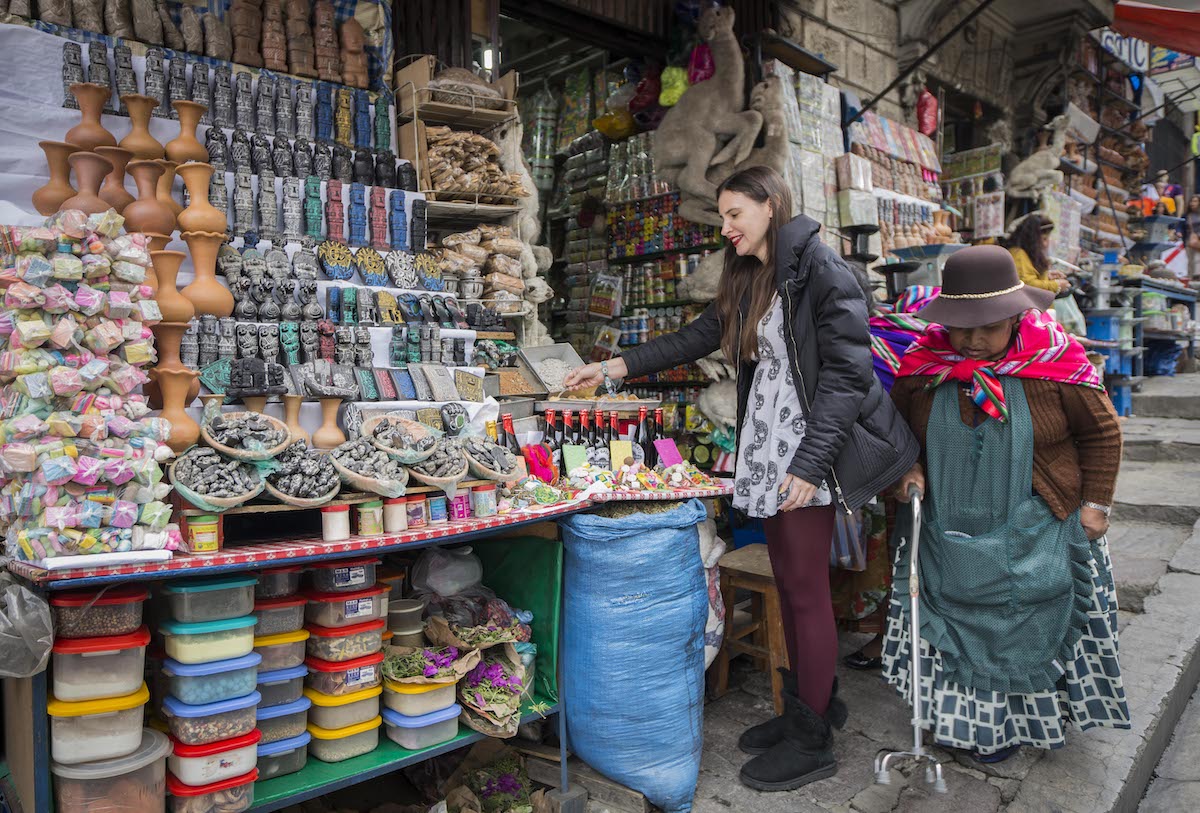By coincidence, I booked my trip to Bolivia during the Alasitas Festival. I discovered the event when I was researching what to do in the country and I found it interesting. Therefore, I scheduled my trip to be in La Paz on January 24. That day the festival begins taking over one of the two capital cities of Bolivia (Sucre is the other) for almost a month. In this city I opted to stay in the Selina hostel chain since they had just opened Selina La Paz.

An ancient festival
‘Alasitas’ comes from a word in Aymara that means “buy me”. The Aymara are indigenous people living in the Andes and High Plains of South America. In Bolivia, Peru and Chile there are still approximately 1 million of their descendants. This nation existed before being conquered by the Incas and then by the Spanish.



Tiwanaku they prayed to the gods asking for good luck with miniature offerings of what they wanted to achieve or have. This event happened near the winter solstice, on dates close to December 22. It is easy to visit Tiwanaku (buses leave from the General Cemetery of La Paz) and it is worth exploring this UNESCO World Heritage Site.



The Spaniard Sebastián Segurola was sent to La Paz in 1781 to defend the city of the Incas, led by Tupac Amaru II. He was the one who decided to restore the Festival of Alasitas moving the date to January 24 in honor of “Our Lady of Peace” patron of the city.


Everything in miniature
Ekeko is the God of abundance and prosperity. His presence is everywhere in the Festival of Alasitas. You can recognize him easily, since he wears a poncho and a cap. You will find figures adorned with money, cigarettes and alcohol that are offerings.


Ekeko represents the luxurious life for Bolivians and it is very common for families to keep a figurine of him at home. I also found a person dressed as Ekeko and took the opportunity to take a picture with him.

In this festival you can find everything you want in miniature. What people want the most is money. You can find bolivianos, dollars and euros alone or in conjunction with houses and cars. The houses range from modest homes to mansions with materials to build them.



You can also buy marriage, university and doctorate certificates. As I went in the Chinese year of the pig, it was also common to find miniatures with pigs. Those who want to travel can buy suitcases.



For the single women it is best to get a rooster. But you can not buy it yourself, since tradition says it must be a gift. I was traveling with my friend Luis so he gave me one. Make sure you choose the correct color as they have different meanings. Yellow is for a man with money, white is for purity, red is passion and black is for widows.


Blessings
We consulted where to go to find stalls and they recommended us to go to the Plaza San Francisco since you can see the Spanish influence in the Alasitas Festival. At noon, the priests of the Cathedral of San Francisco go out to give their blessing by sprinkling holy water on the people who congregate at the entrance. There were too many people so we saw this show from above.



Other places to go are the Plaza San Pedro and the Urban Park, which is a good place to find the stands during the month long festival. After the opening day, the Festival of Alasitas becomes calmer.
The traditional thing is to receive the blessing from a “yatiri” or shaman as they are popularly called. They took our miniatures and put them in a bag with some liquids and flowers. Then they would say some prayers that I could not understand and then passed the miniature over a stove with incense, firewood or charcoal. At the end they offer you a beer in a small glass.


In 2017, the Alasitas Festival was inscribed on the Representative List of the Intangible Cultural Heritage of Humanity of UNESCO. If you visit La Paz, Bolivia in January or February, be sure to include it in your agenda.











